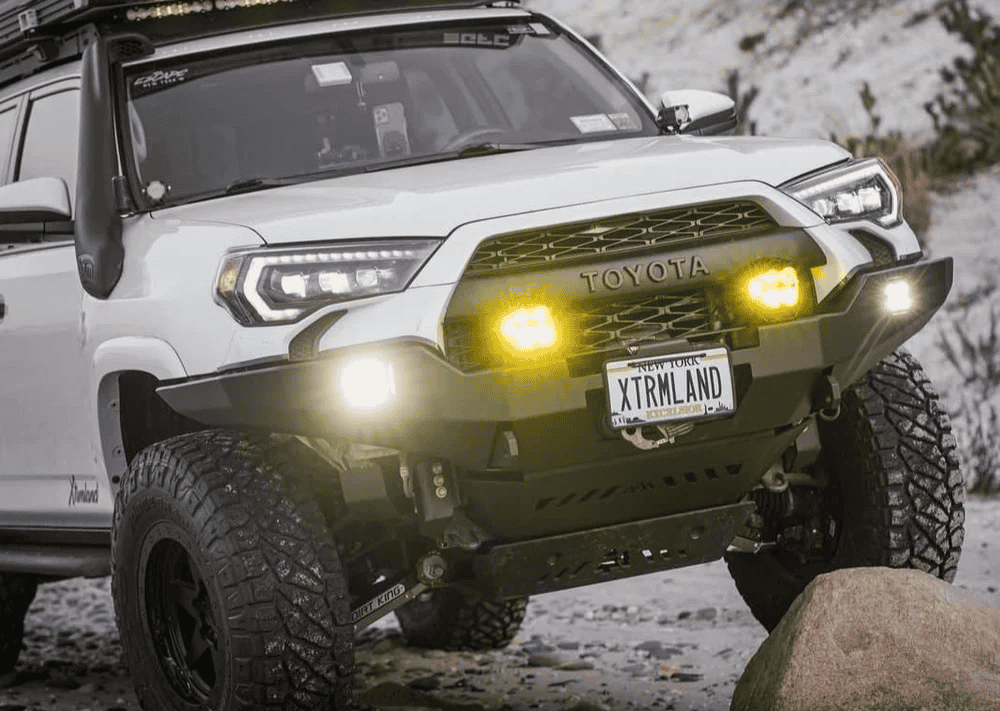Overland Vehicles

The ford F450 platform brings serious braking, steering precision, and a wide track front axle that inspires confidence when carrying a tall load. With an eight foot long bed and a dually rear end, an F450 truck camper pairing supports large slide in models that need both capacity and stability. Many owners consider an overland F450 for its room to grow into heavier gear like extra water, gear drawers, and recovery tools without straining the chassis.
Payload is the first gate. Know the gross vehicle weight rating, weigh the truck empty with fuel, and compare that to the camper’s loaded weight. A f450 camper often lands in the heavy category once you account for water, propane, batteries, food, and spares. Keep the center of gravity forward of the axle as specified by the camper builder. Verify tire and wheel load ratings match or exceed the actual scale numbers.
Suspension tuning is not about lift for looks. The goal is control and composure. Quality shocks, progressive leaf solutions, and rear airbags used thoughtfully can tame sway and porpoising. On an F450 with 19.5 inch wheels, tire choice is more about load and road manners than flotation. If you plan rough tracks, confirm that your tire load index remains appropriate at your chosen pressure.
Roamer truck camper designs often describe low profile, composite, or pop up campers that keep height down and weight efficient. The appeal is simple. A Roamer style camper reduces wind resistance, tucks under tree limbs, and still offers real shelter. On an F450, this approach can deliver a quiet highway ride with less buffeting and a more planted feel on broken pavement.
Pop up versus hard side is a practical choice. Pop ups grant lower height and better fuel economy, while hard side options can add insulation and storage volume. For cold weather, consider insulated soft walls, a thermal pack, or a hard side layout with double pane windows. Always review the truck camper’s center of gravity sticker and confirm it aligns with the F450 bed to avoid odd handling.
Electrical systems make or break off grid comfort. A modern f450 truck camper build typically uses lithium batteries sized from 200 to 600 amp hours, a pure sine inverter, and 300 to 800 watts of roof solar. Pair that with a DC to DC charger that respects the F450 alternator’s profile to keep charging predictable while driving. If you plan extended stays in shade, a portable panel or alternator focused charging strategy helps.
Water and heat demand honest math. Daily use can range from 3 to 6 gallons per person, so a couple may want 40 to 60 gallons onboard with a way to filter questionable sources. For winter trips, keep tanks and lines inside conditioned space or use proven heat pads and thoughtful routing. Ventilation matters in every season. A roof fan and cross breeze through side windows keeps the space fresh and reduces condensation.
Mounting hardware and tie down strategy protect your investment. Most heavy campers leverage frame mounted tie downs, turnbuckles with built in shock absorption, and bed reinforcement for long life. Check fasteners and torque after the first few drives and at regular intervals. Secure bikes, recovery gear, and spares so they cannot migrate during corrugations or emergency maneuvers.
Start with a scale ticket. Add people, pets, water, fuel, food, and tools. Confirm axle by axle numbers and adjust load distribution to avoid overloading a tire. Keep heavy items low and near the front of the camper to help the F450 feel predictable.
Aim for a calm ride. Dampen oscillations with premium shocks and correct spring rates. Choose a tire pressure that supports measured axle loads. Off pavement, pick lines that minimize side to side rocking and reduce momentum before obstacles rather than after.
Size lithium capacity around your daily use. Induction cooking, air conditioning, and large fridges require larger batteries and alternator charging support. For water, carry a primary tank plus a small reserve container for back country flexibility, and use a simple filtration system you will actually maintain.
You now have the framework for a balanced ford f450 camper that travels far without drama. The next step is translating the plan into real parts, clean installation, and testing. That includes suspension tuning that favors control, power systems that match your devices, and secure storage built for the miles ahead.
If your travel map includes long washboard runs, tight forest approaches, and long freeway transfers, a purpose built overland F450 can drive like a composed tourer. Our shop focuses on predictable handling with matched springs and shocks, quiet interiors that resist rattles, and electrical systems that charge fast while you drive. We also plan mounting points for gear so the cabin remains uncluttered and fast to set up.
Explore how we approach capability and comfort across our overland rigs. For a deeper look at components and install flow tailored to a f450 camper, see our custom overland upfit overview. Curious what it is like to work with our team end to end? Visit why choose ozk customs.
When you are ready to map your ford f450 camper from concept to keys, share your route, climate, and must haves. We will propose a practical scope, timeline, and build path that respects payload, safety, and comfort so your F450 and Roamer truck camper feel like a single confident machine.
Ready to turn your F450 into a capable, comfort focused overland camper that drives confidently on highway and trail? Our team designs and builds balanced, safe, and beautiful truck camper systems with dialed suspension, power, and storage. Share your goals and timeline, and we will map a build path that fits your travel style. Submit the form to start your F450 game plan.
ADDRESS:
6159 E Huntsville Rd, Fayetteville, AR 72701
PHONE:
(479) 326-9200
EMAIL:
info@ozkvans.com